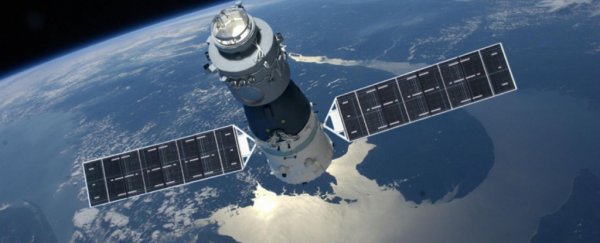The 8.5-tonne (9.4-ton) Chinese space station Tiangong-1 has accelerated its descent towards Earth, and is expected to come crashing down to the surface within the next few months.
While most of the 12-metre (40-foot) laboratory will probably burn up in the atmosphere on reentry, chunks weighing up to 100 kilograms (220 pounds) could make it to Earth - and no one can predict where they're going to end up.
The space station was launched in 2011, and hosted three missions, including China's first female astronauts, Liu Yang and Wang Yaping. The station's name means "Heavenly Palace", and it was used as a technological testbed for a larger space station planned for 2023.
It was never intended to be permanent, and in March 2016, the Chinese government announced that its time had come to an end. But then in September 2016, Chinese officials confirmed that they had lost control of the station, and it was on a decaying orbit.
They predicted that it would fall to Earth sometime between October 2017 and April 2018, noting that its altitude was about 370 kilometres (230 miles). The Kármán line, which represents the official border between Earth and space, is at 100 kilometres (62 miles).
Now, according to Harvard University astrophysicist Jonathan McDowell, it's a lot closer, and is likely to fall to Earth sooner than later.
"Now that [its] perigee is below 300 kilometres (186 miles) and it is in denser atmosphere, the rate of decay is getting higher," he told The Guardian.
"I expect it will come down a few months from now - late 2017 or early 2018."
When and where is unknown, but it is unlikely to pose a serious danger. In 1991, Russian space station Salyut 7 reentered Earth's atmosphere over Argentina, causing a spectacular lightshow, and little to no debris.
In 2001, Russian space station Mir was brought home via controlled reentry. Debris fell, but mainly over the Pacific Ocean.
And, of course, NASA's Skylab reentered Earth's atmosphere over Western Australia in 1979. Australia issued NASA a fine for littering for that one.
No deaths or injuries were ever reported from these events. If you're lucky, though, you may just get to see the fireworks as the space station comes apart and the friction from reentry incinerates it.
You can follow Tiangong-1's orbit on the live satellite tracking website N2YO.
